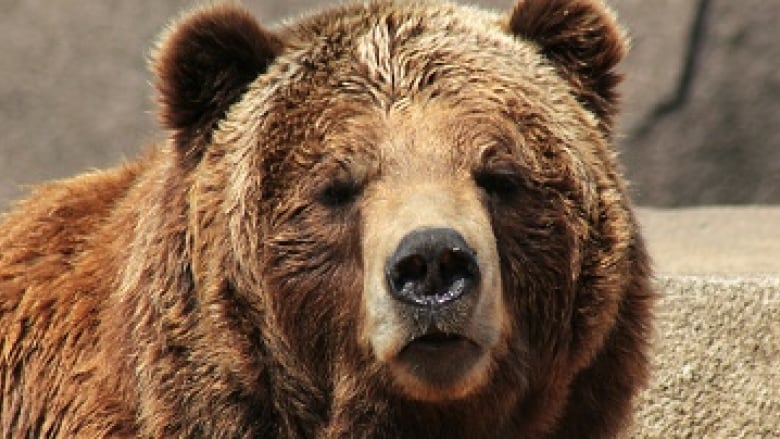Grizzly bear recovery plan changes in the works, province says
Estimates put number of grizzlies in Alberta between 1,000 and 1,200

Feeding grizzly bears in the wilds of Alberta may be a dumb thing to do — but it's not illegal.
Not right now at least.
With grizzlies currently listed as a threatened species under the Alberta Wildlife Act, the provincial government is looking at drafting a new Grizzly Bear Recovery Plan, part of which would make feeding one a crime.
"Generally it's people pulling over in their cars, a bear is on the side of the road and you toss the crust of your sandwich out, a chocolate bar or something like that," Paul Frame, a provincial carnivore specialist told the Calgary Eyeopener.
"The issue is, once a bear gets conditioned to human food they inevitably are going to become a public safety risk and that doesn't end well either for the humans involved … or for the bear in the end."
- MORE CALGARY NEWS | Inner-city fenced dog park in Beltline a first for Calgary
- MORE CALGARY NEWS | Child advocates call for overhaul of private day homes after Calgary sex assault case
The punishment — should changes to the Wildlife Act be implemented — will likely be fines for feeding bears in the wild.
"We'd have to amend the act and the regulation and then if a person is caught doing this, they'd be ticketed and have to probably make a court appearance and there would be some fine or other penalty associated with that," said Frame.

Efforts to conserve grizzly bears have been ongoing since 2008.
"In 2010 the population was estimated to be between 700 and 800 in the province," said Frame.
"Using the most up-to-date information and mathematical models, we would estimate the population to be between 1,000 and 1,200 right now in Alberta.
"The population seems to be expanding eastward, we have more reports of conflict out in private lands to the east and forest reserves, so it seems the bear population is responding well to our recovery efforts."

Up to 20 per cent of grizzly bear deaths in the province happen when they get hit by vehicles.
"Most of these vehicle collisions happen on major highways, and reducing the food attractants that draw bears into those areas is probably the main thing we can do," said Frame.
"That would be cleaning up road kill deer, securing grain in grain trucks better, those types of things.
"I don't know that we could go along and remove all the natural foods along highways, but in key areas where we have repeated problems, that is something we can do to reduce those types of grizzly bear deaths."
Better planning around development needed
"If we've got oil and gas and timber happening in an area, let's plan to have those roads shared so we're keeping the road densities in core grizzly bear habitats at a lower level," said Frame.
How many bears are needed before they'll no longer be considered threatened?
"That's a really good question and a tough one to answer because ecologically a habitat can sustain a certain number of bears but then we have to deal with social carrying capacity, so how many bears is appropriate for a certain area." said Frame.
"We're working on a project now where we're looking at what we can expect a recovered grizzly bear population to look like numerically in Alberta. That's not completed yet because it's a big province.
"In some areas we have completed it, it looks like we're at our targets in parts of the south and other parts of the province. In other areas we don't really have the information to determine yet, so that's an ongoing process."
With files from the Calgary Eyeopener